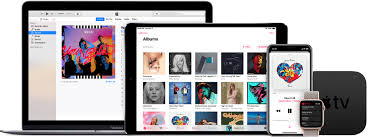Like so many of you, getting my diagnosis of Parkinson’s disease was both a relief and devastating. Unlike most people who get the diagnosis, I was more equipped to deal with it. I watched my dad (and mom) take on the challenge of the disease. Additionally, I am a pharmacist by training and have spent my whole career in healthcare – mostly working for healthcare technology companies. After wiping away the tears, I decided to do what I do best. Namely:
- Learn as much as I can about the disease and how best to live with it
- Find all resources needed in the area
- Choose fitness routines that are most helpful short and long term
- Research and stick to a good diet program
- Use technology to my advantage
Ask not what technology can do for you but what you can do with technology
Each of us has a different comfort level with using the latest technologies. However, no matter where you fall on the spectrum currently, it is worth asking what you can do with technology to help you manage your PD or, if you are a care partner, assist without nagging! These innovations are meant to make your life easier and they do – especially when some tasks get harder to accomplish.
To start, pick one of the options below to assess where you are currently in using technology:
- I am reading this on my smartphone or tablet.
- I am reading this on my computer.
- I had a friend print this out so I could read this.
Whatever your answer, we all can take a few steps forward in using technology to your advantage.
Start out simply by using email and the Internet
One of the easier ways to start using technology to your advantage is an oldie but goodie – email. If you take a bit of time up front to sign up for updates and alerts from trusted organizations, important and relevant information will appear in your inbox without you having to spend more time searching for it. Some examples include:
- Setting up Google Alerts using key words like “Parkinson’s disease”
- Getting notices when there is an update to your favorite blog
- Signing up to receive updates and Webinar announcements from Michael J Fox, APDA, Parkinson’s Foundation, and others
Speaking of Webinars, they are a great way to learn and understand more about a topic. Webinars are usually an hour long and are streamed over the Internet live and are archived so all can watch them when time permits. It is like attending a seminar but you are sitting in your PJs in front of a computer. If you want to find out more about dealing with fatigue, there’s a Webinar for that. Just search the archives from those trusted, PD focused organizations to find the latest on fatigue.
There’s an app for that
For most of us, apps are probably the most underutilized ‘tools’ available via our smartphones. There is literally an app for everything you can think of. Apps have huge potential to help us manage our disease, track short and long-term changes and communicate with our care team.
Although I haven’t found one app that is helpful and specific to PD, I do use several apps built for specific purposes and linked to each other (for the most part). Currently, I find the below apps most helpful.
- Apple’s Health app is preloaded on every iPhone and can be a health hub to gather data from a number of other apps by linking them together
- An app to track the macro and micro nutrients I consume daily
- An app that tracks my water intake daily
- An app that reminds me to take my meds and sends a message to someone when I do or do not take it
- An app that tracks my steps and miles of activity daily
- An app to track my voice quality over time
Not only can apps help you manage your PD, several can make life easier now and throughout the PD journey. I believe in using what’s available when needed. For example, use the Uber or Lyft app to get a ride if you need it. If it is difficult to type, talk into the phone to text and email. If people can’t read your writing, use an app to make a grocery list or create notes.
Alexa, turn on the bathroom light
I’ll go out on a limb and say Amazon’s Alexa devices are the best things since sliced bread. These devices allow users to do hundreds of activities and the list grows daily. Alexa devices respond to voice commands – no typing necessary and great practice using your indoor voice. This is another great ‘tool’ to use if some activities become harder to do. Here’s a short list of ways to use Alexa.
- Turn on lights in the middle of the night before you get to the room (need a connected device plugged into the outlet or switch)
- Create a shopping list reducing the need to return to the store many times
- Have the grocery list delivered to your door from Amazon (requires Prime membership)
- Call or text anyone in your contact list
- Listen to the Parkinson’s Foundation podcast while you cook
- Listen to music or the news or a daily meditation
- Play Jeopardy
Use technology to your advantage It is a great time to be alive. Although some of us get frustrated by technology in our lives, mostly these new innovations – like having an Internet connected small computer in your hand – can be used to improve our lives. What do you need help doing? Chances are Alexa and/or an app can help. Take advantage of what’s available to help make life easier. If you need some help getting started, ask your 9 year old granddaughter

